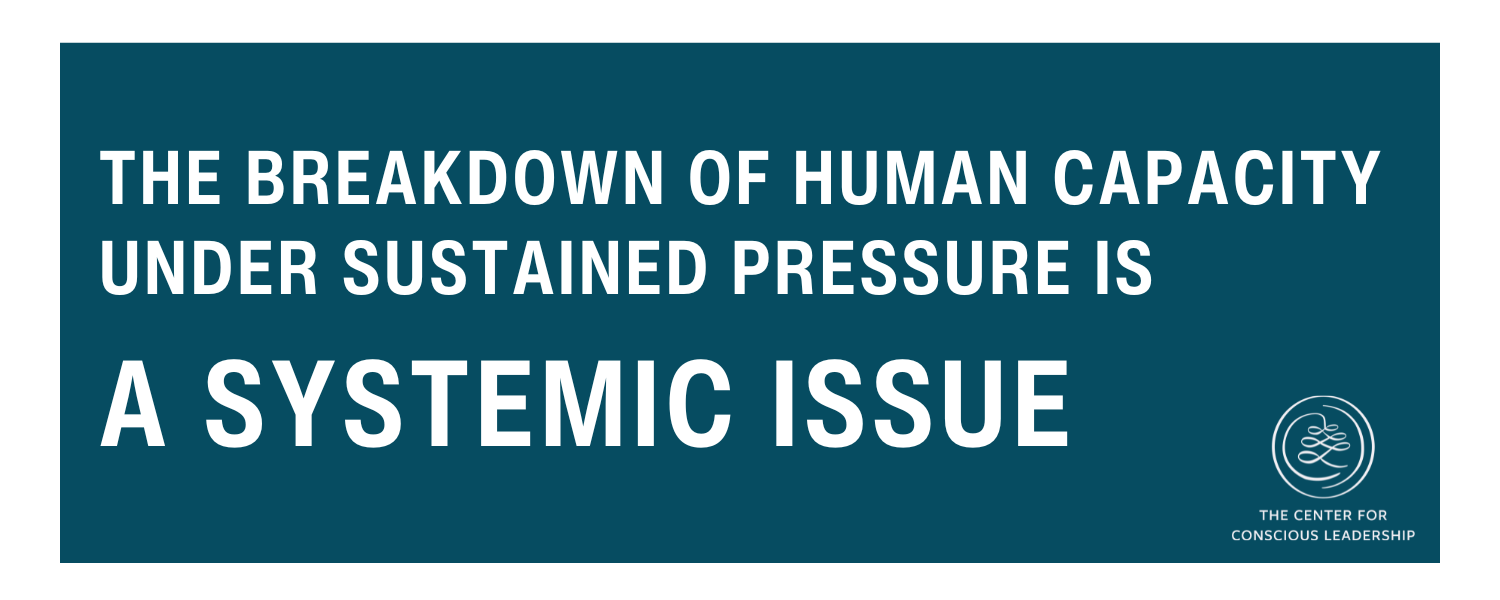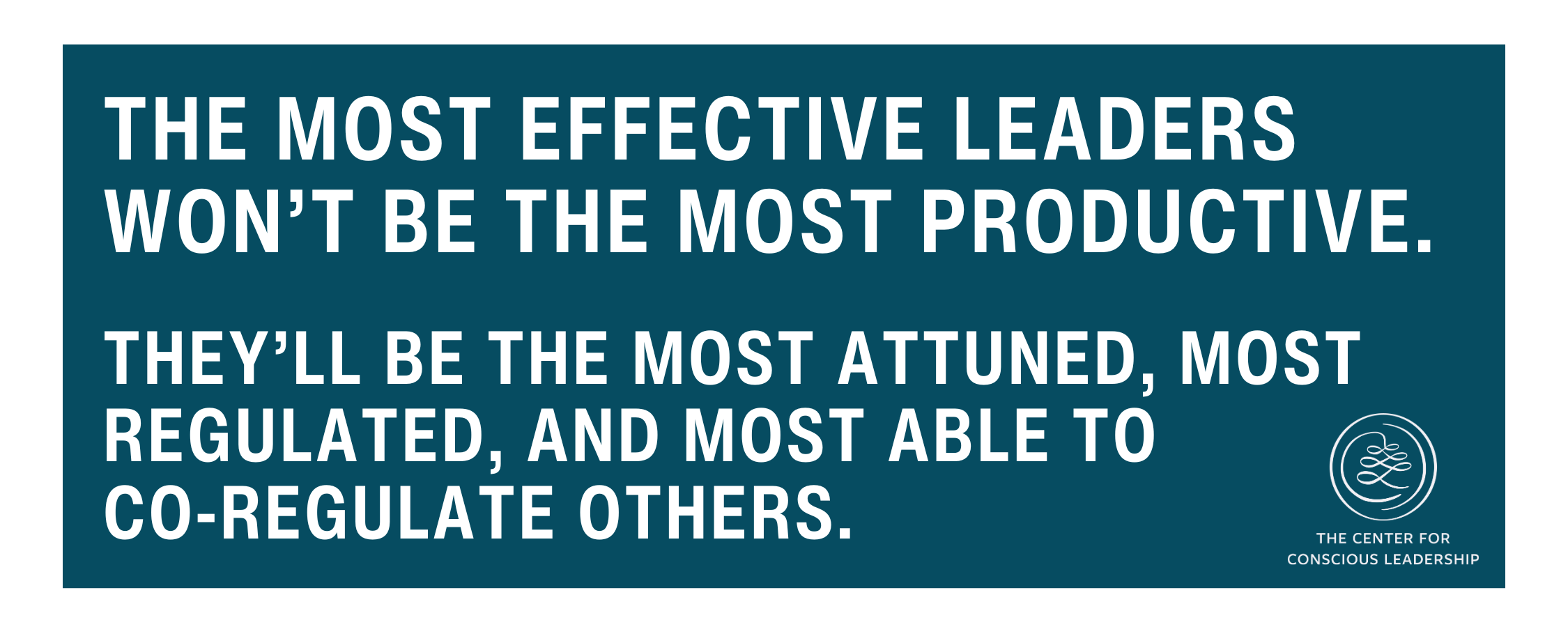Introducing the TIL System: 6 Pillars of Conscious Leadership
Leadership Isn’t Broken. It’s Overloaded.
You’re not imagining it—leadership really is harder than it used to be.
Even the most effective leaders are feeling lost, and rightfully so. None of us have done this before. There’s no handbook for it, and there’s no sign that the pace of change will slow down.
Today's leaders are navigating compounding, chronic, overlapping crises, in their teams, their systems, and the world around them. We're operating in a near-constant state of perma-crisis.
Burnout is widespread, trust is low, urgency is high, and disconnection is pervasive. Two thirds of today’s workforce reports feeling burnt out, disengaged, or struggling to thrive. Employee engagement has been falling globally for several years in a row, costing the global economy $8.9 trillion annually and reflecting a deeper truth: nearly 80% of the world’s workers are suffering at work.
The breakdown of human capacity under sustained pressure is a systemic issue: The environments we work in aren’t neutral. They’re either healing or harmful, retraumatizing us through rigidity, control, disconnection, and toxic pressure.
The models we inherited for leadership are built to reinforce the status quo, not create a new one.
We need a new system that supports us and our teams, and we need it now.
The Current Operating System Is Failing
Most leaders are still using tools and mindsets from an era that prized efficiency over empathy, performance over presence, and control over care. These industrial-era models were designed to manage labor, not thoughtfully lead humans. They emphasize pressure, control, urgency, and output. But under extreme pressure, humans don’t perform better—they protect themselves.
That protection can look like conflict avoidance, micromanagement, emotional shutdown, overfunctioning, and fear of feedback among many, many others. We react this way to protect ourselves from a perceived threat.
In other words, humans naturally and instinctively react with the very behaviors many leaders are trying to fix.
These aren’t just “performance problems.” They’re nervous system responses—a sign that your workplace has normalized stress to the point of collective dysfunction, leading to impaired decision-making, stalled innovation, and eroded trust.
And when trauma becomes embedded in our systems and cultures, we stop seeing it as the toxic cycle it really is. We say it’s “just how things are.”
But something in us knows: it doesn’t have to be this way.
We deserve better.
Introducing the TIL System: Leadership for a New Era
The TIL System (Trauma-Informed Leadership) isn’t another leadership framework; it's a new operating system for leadership—one that recognizes your nervous system is organizational infrastructure.
It's designed to help leaders create safety, restore trust, unlock collaboration, and lead with resilience instead of reactivity—restructuring leadership from the inside out, biologically, emotionally, and systemically, so organizations can retain top talent, sustain innovation, and build cultures that withstand chronic uncertainty.
The TIL System recognizes what science now confirms:
That people cannot do their best work in a constant state of stress
That connection—not control—is the true driver of innovation and resilience
Organizations that prioritize trauma-informed leadership and psychological safety see 27% reduction in turnover–not because people are suddenly happier, but because they finally feel safe enough to stay. They see 40% fewer safety incidents, because people feel safe enough to speak up before disasters happen. They see a 12% increase in productivity, because regulated nervous systems make better decisions.
The TIL System synthesizes this science with the lived experience of millions of people, creating leadership that understands how humans work and designs systems where they thrive.
The 6 Pillars of the TIL System
Each pillar is a key skillset for trauma-informed, biologically intelligent leadership. Together, they form the infrastructure for cultures that heal, rather than harm.
The Foundation: Regulation as Infrastructure
These first two pillars are the bedrock. Without them, nothing else functions.
1. Self-Regulation
Creating safety in others by first creating it in ourselves.
Every leader’s nervous system sets the tone for the room. Self-regulation is the foundational skill that allows leaders to respond, not just react.
In Practice:
Pausing before replying to a heated email to maintain composure before providing clarity.
Naming your own stress in a team meeting to model vulnerability without destabilizing others.
Recognizing when your urgency is creating chaos, and choosing steadiness instead.
2. Co-Regulation
Safety is contagious. So is stress.
Leaders influence more with their presence than with their strategy.The ability to project calm, presence, and attunement helps others come out of survival mode and back into collaboration. A team that trusts their leader is a team that can work together, stay motivated, and reach the finish line united.
In Practice:
Maintaining steady eye contact and calm vocal tone during crisis updates, so your team can access creative critical thinking instead of panic.
Staying fully present in one-on-ones rather than multitasking, so people feel seen, are valued, and speak candidly.
Slowing your pace when delivering difficult news, to give others' nervous systems time to integrate information without shutting down.
The Application: Regulation in Real-Time
Once you can regulate yourself and co-regulate others, these three pillars show you how to use that capacity in the moments that matter most.
3. Protection Pattern Recognition
What looks like resistance is often a nervous system doing its job.
Most workplace dysfunction is misdiagnosed. This pillar helps leaders recognize the biological patterns driving behavior so they can respond with curiosity, not control.
In Practice:
Asking "What's shifted in their sense of safety or belonging?" when a high performer suddenly withdraws, rather than assuming motivation is the issue.
Recognizing that chronic pushback may signal lack of psychological safety, not lack of alignment, so you address the real problem.
Reframing "resistance" as data about what people need to feel secure enough to engage, rather than treating it as obstruction.
4. Grounded Agility
True flexibility requires inner steadiness.
The pace of change isn’t slowing down. Grounded agility is the capacity to stay centered while adapting quickly. It’s not about reacting faster—it’s about being stable enough to respond wisely in the face of chaos.
In Practice:
Naming uncertainty clearly without amplifying urgency, so teams can adapt without spiraling into reactive mode.
Adjusting strategy while anchoring in values, so people trust the pivot and stay engaged through change.
Maintaining psychological safety during rapid shifts, so innovation accelerates when you need it most rather than stalling.
5. Trauma-Informed Decision-Making
Every decision either builds trust or erodes it.
In high-stakes moments, it’s easy to default to urgency and hierarchy. This pillar equips leaders to consider the emotional and relational impact of decisions—not just the operational outcome.
In Practice:
Sequencing big announcements by briefing managers first, so they can co-regulate themselves and their teams rather than scrambling to respond to surprise.
Asking "How will this decision land emotionally?" before "How fast can we execute?" to protect trust you've spent years building.
Building in processing time after major decisions, so people can metabolize change instead of performing compliance.
The Structures: Scaling What Works
This final pillar ensures the transformation doesn't depend on individual heroics. It becomes structural.
6. Institutionalized Humanity
Healing shouldn’t rely on heroism.
Too many cultures depend on the emotional labor of individual leaders to create safety. This pillar ensures policies, processes, and systems reflect the care, clarity, and dignity people need to thrive, at the scale each organization needs.
In Practice:
Building recovery time into project timelines, so sustainability becomes structural rather than dependent on individual heroics.
Creating feedback mechanisms that don't require courage to use, so you surface problems before they become crises.
Designing meeting cadences that prevent chronic overload, so your highest performers don't burn out from proximity to leadership.
Together, these pillars create a new leadership operating system—one that addresses both individual behavior and organizational culture.
TIL Is the Bridge Between Leadership and Healing
This work isn’t about fixing broken people. It’s about evolving the systems that are pushing people past their breaking point.
Rooted in trauma-informed leadership principles, the TIL System helps leaders recognize when trauma is shaping behavior, and equips them to interrupt those cycles in real time. It gives organizations a shared language, strategy, and skillset for moving from reactivity to regulation, from control to co-creation, and from disconnection to engagement.
The TIL System is the infrastructure that equips leaders to meet the future with connection, creativity, resilience, and humanity—the foundation for sustainable, future-ready, human-centered leadership.
Why Waiting is the Riskiest Choice
The organizations that will thrive in the coming years aren’t the ones pushing people harder. They’re the ones investing in leaders who can hold complexity, humanize culture, and build trust in unstable times. They’re the ones honoring and recognizing the humanity in their people.
The most effective leaders won’t be the most productive. They’ll be the most attuned, most regulated, and most able to co-regulate others.
Organizations that build trauma-informed leadership capabilities now will have a 3-5 year competitive advantage in retention, innovation, and resilience.
TIL isn’t a leadership trend. It’s a survival strategy—for people, and for the systems they serve.
The Work Starts Here
At the Center for Conscious Leadership, we help organizations shape the kind of leaders the future demands—and that people deserve.
Our 3-month TIL System program is designed to transform your top leaders through 6 hours per month of intensive, embodied training that:
Teaches the core principles of trauma-informed leadership;
Equips leaders with actionable, Monday-morning tools;
Transforms cultures from reactive to regenerative.
This program is for organizations ready to invest in their top 20-50 leaders—those who set the tone for everyone else. It's designed for leaders who know that sustainable performance requires a new operating system, not just harder effort. If you're ready to rewire how leadership actually functions, let's talk.
The cost of waiting is measured in turnover, disengagement, and missed innovation.
The benefit of acting now? A leadership team that can navigate anything.
Schedule a consultation to explore if TIL is right for your organization.
The world we’re building requires leaders who are conscious, connected, and trauma-informed.
At The Center for Conscious Leadership, we help executives and organizations evolve—integrating neuroscience, trauma-informed leadership, and systems thinking to create cultures that heal and perform.
If you’re ready to build the future with us, explore our Trauma-Informed Leadership Program or connect to learn more about our coaching and systemic work.







